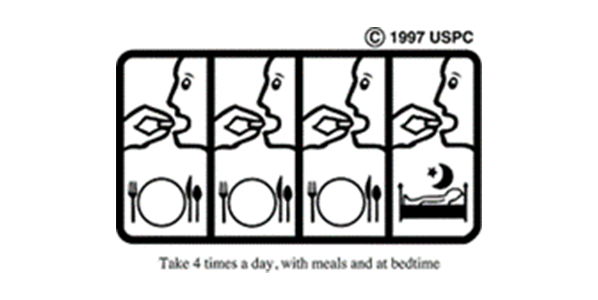Promoting Safe Medication Use

The USP Healthcare Quality and Safety (HQS) Center of Excellence works with experts and stakeholders to develop health literacy tools and solutions for healthcare professionals that promote patient understanding and mitigate medication errors, reinforcing our commitment to improved global health. Approximately 90 million American adults (47%) have limited health literacy, putting them at a higher risk for adverse medication use.1 Limited understanding of how to use medications can worsen health outcomes and increase costs for patients, as well as the healthcare system. Healthcare professionals play a pivotal role in providing individuals with clear, understandable, and accessible health information.
USP Health Literacy Initiatives
The USP Healthcare Quality and Safety (HQS) Center of Excellence is focused on providing standards and solutions that address the multidimensional challenges related to health literacy, supporting social determinants of health through different learning styles. HQS works to ensure that health literacy and health equity are both incorporated into our work to promote improved health outcomes for all patients.
Important Updates
- September 30, 2024 - The public comment period for USP General Chapter <1265> Prescription Drug Information – Guidelines was open for 90 days from July 1, 2024, to September 30, 2024.
- The purpose of this chapter is to ensure that patients receive useful information about their medications, helping maximize adherence benefit while reducing medication misuse. Proposed revisions to this chapter include removing “written” from the chapter title to better address the other ways to deliver medication information to patients and/or caregivers and updated the principles for developing a medication guide, and more
- June 27, 2024 - How to create medication guide published
- Based on the principles of <1265> Written Prescription Drug Information Guidelines provides best strategies for healthcare practitioners who design medication guides.
- June 27, 2024 - How to read an OTC label guide published
- Provides step-by-step instructions on reading label information of over-the-counter drugs for healthcare practitioners to share with patients.



